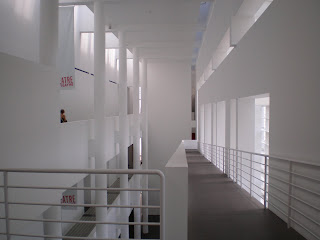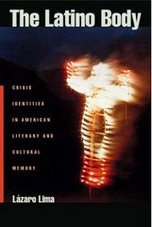
Don Matias Romero. Envoy of the Republic of Mexico, 1863; three-quarter-length, standing. (College Park, Maryland, No. 111-B-1228.)
National Archives Celebrates Hispanic American Heritage MonthWashington, DC
The National Archives will celebrate Hispanic American Heritage Month with special films, programs, and lectures. These events are free and open to the public and will be held at the National Archives Building in Washington, DC, which is located on the National Mall at Constitution Ave. and 7th Street, NW, and is fully accessible.
New Thinking on Lincoln's Legacy: Hispanic Perspectives
Tuesday, September 18, at noon, William G. McGowan Theater
Abraham Lincoln’s 200th birthday is in 2009. Does his legacy have resonance within Hispanic communities? Estévan Rael-Gálvez, New Mexico State Historian; Ernesto Chávez, associate professor of history at the University of Texas at El Paso; and Jerry Thompson, Regents Professor, Social Science Department, Texas A&M International University, will unearth fresh historical perspectives on Lincoln, his era, and his legacy.
Film: The Lemon Grove Incident
Friday, September 21, at noon, William G. McGowan Theater
Based on historical events, this docudrama, which blends archival photos, dramatic reenactments, and interviews with former students, portrays the efforts of the Mexican American community in Lemon Grove, CA, to challenge local school segregation practices and racial discrimination in Depression-era America. Produced by Paul Espinosa. (1985, 58 minutes.)
Playing America’s Game: Baseball, Latinos, and the Color Line
Wednesday, September 26, at noon, Jefferson Room
Latinos have emerged as baseball’s largest minority group over the last two decades, highlighted by the pitching of Pedro Martínez and the hitting exploits of Alex Rodriguez. In Playing America’s Game: Baseball, Latinos, and the Color Line, Adrian Burgos examines the long history of Latinos in U.S. professional baseball, focusing particularly on their significant presence in the Negro Leagues.
Zoot Suit Riots
Friday, October 12 at 12 noon, William G. McGowan Theater
In August 1942 the murder of a young Mexican-American man ignited a firestorm in Los Angeles, California. In no time at all, ethnic and racial tensions that had been building up over the years boiled over. Police fanned out across the city in a dragnet that netted 600 Mexican Americans. Among those accused of murder was a young "zoot-suiter" named Hank Leyvas -- the poster boy for an entire generation of rebellious Mexican kids who refused to play by the old rules. These dramatic events are chronicled in this 2001 documentary from the PBS series, American Experience. Written, produced, and directed by Joseph Tovares. (60 minutes.).
Related National Archives “Know your Records” Programs
All programs are open to the public and are free unless otherwise noted.
Hispanics in the 19th Century through Military and Census Records
Wednesday, September 26, 9:30–11:30 a.m., Jefferson Room
National Archives staff archivist Constance Potter and archives specialist John Deeben will present a workshop on Hispanics in the Southwest in the 19th century, focusing on Civil War military service, regimental, and pension records for volunteers from New Mexico, Arizona, and Texas as well as population and non-population census schedules. Reservations are required, and a fee of $20 is payable by cash or check at the door. Call 202-357-5333.
Mexican Border Crossings
Thursday, September 13, at 11 a.m., Room G-24, Research Center
National Archives staff archivist Claire Kluskens will discuss Mexican border crossing records that document the arrival of permanent and temporary immigrants to the United States at the U.S.-Mexico border.
Hispanic Volunteers in the Antebellum U.S. Army
Tuesday, September 18, at 11 a.m., Room G-24, Research Center
National Archives staff archives specialist John Deeben will discuss service records and other documentation for Hispanics who served in the U.S. Army, 1835–55. Many fought in the Second Seminole War, the Mexican War, and the Apache and Navajo wars of the 1850s. (This lecture will be repeated at the National Archives at College Park, MD, in Lecture Room B, on Thursday, September 20, at 11 a.m.)
Hispanic-Related Films from the National Archives
Friday, September 21, at 11 a.m., Room G-24, Research Center
National Archives staff present and discuss a variety of film clips illustrating Hispanic population, culture, activities, and families in the early to mid-20th century.
Documenting Community, Politics, and the Economy in Puerto Rico, 1898–1950
Tuesday, September 25, at 11 a.m., Room G-24, Research Center
National Archives branch chief Kenneth Heger will provide an overview of the records of the two Federal agencies that administered Puerto Rico—the Bureau of Insular Affairs and the Office of Territories—focusing on their value to local historians. (This lecture will be repeated at the National Archives at College Park, MD, in Lecture Room B, on Thursday, September 27, at 11 a.m.)
To verify the date and times of the programs, the public should call the Public Programs Line at: 202-357-5000, or view the Calendar of Events on the web. To contact the National Archives, please call 1-866-272-6272 or 1-86-NARA-NARA (TDD) 301-837-0482.















































